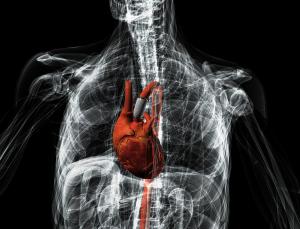Nottingham Trent pioneers 3D-printed heart pump
Your options are pretty limited if you have serious heart failure, writes Jay McGregor of New Scientist. Either you get a heart transplant, which are extremely hard to come by, or you have to be hooked up to a bedside system to keep your heart pumping. Now, a new 3D-printed, battery-operated implant will let people go about their day-to-day lives while they wait for a transplant.

Developed by Philip Breedon and his colleagues at Nottingham Trent University in the UK, the “smart aortic graft” is designed for people whose hearts have problems pumping enough blood around their body.
Heart transplants aren’t a viable option for everyone because there is higher demand than supply – around 160,000 people in Europe require one each year but only 600 are available.
The other option is being fitted with a “ventricular assist” pump that is implanted into the body. These pumps are often connected through the skin to an external power source, which creates a potential source of infection and means the patient is bed-bound in hospital.
Breedon says that his implant eliminates the need to be tethered to a power source. It would be grafted into a removed section of the aorta to improve the heart’s effi-ciency. The implant is coated in a material that expands and relaxes when a voltage is applied to it, beats slightly out of sync with the heart to help it pump the blood.
One downside is that the batteries will have to be replaced from time to time, necessitating another operation. But the team is working on ways around this. “The device is being refined to minimise its power usage, so as to allow it to run off commercially available, implantable, rechargeable batteries,” says Breedon. The team is also investigating ways of wirelessly recharging the implant.
The pump has to be 3D printed because every one needs to be made bespoke to fit a person’s body. The patient is given an MRI scan and the implant is printedusing this as a guide.
Jeremy Pearson, associate medical director at the British Heart Foundation, believes that, although it may remove the need for other implantable devices, the pump could present other problems:
“Placing a graft with different material properties to the removed section of aorta will alter blood flow patterns that may accelerate development of atherosclerosis or aneurysms,” he says.
Syndicated content: Jay McGregor, New Scientist
Image: Nottingham Trent University
“You Have the Power to Donate Life – Sign-up today! Tell Your Loved Ones of Your Decision”
1 comment:
This is awesome news for those in need in years to come, but what about those who need it now? Isn't it still so new that it costs hundreds of thousands of dollars? That's not something I see Ontario health-care using anytime soon.
Post a Comment